Text




#comic#digitalcomic#sentimental#closure#relationships#friendships#digital#art#drawing#comics#flamingtunapictures#i finally just had to call this thing done i always spend too much time tweaking because i'm never actually satisfied with the result#love feeling like an imposter artist let's go
3 notes
·
View notes
Text
pretty much #hasbro >:(
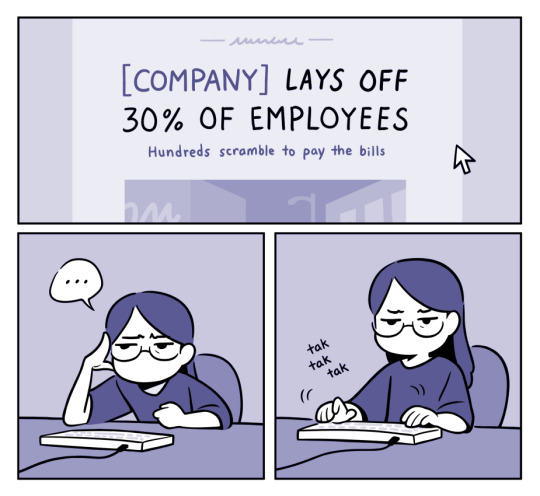

every single time
84K notes
·
View notes
Text
Spiritfarer Review - 8/10
Tl:dr - Spiritfarer offers a profoundly emotional story with an engaging cast of characters, beautiful artistic execution, and a sentimentally charged soundtrack. However, as a “game,” it toes the line between cozy and tedious, unfortunately falling to the latter more often than not.

—
While Spiritfarer is certainly a polished product, the core design choices reveal a system that ultimately frustrates the resource-management genre: turning cozy mundanity into monotony and, ironically, getting in the way of it’s own story.
Resource Efficiency is an Illusion - Resource-management games are defined by balancing early-game tedium with late-game automation/efficiency to maximize every second of gameplay. In Spiritfarer, there is a lot of unavoidable dead time (see section “Back and Forth and then Back Again”) in addition to perpetually high demands of a player’s attention just to acquire raw materials. It doesn’t matter if you’re processing your first log or your 1000th log, you have to “play” a precision cutting mini-game every time. This process can never be automated, and, even after finding the efficiency upgrade, will still require you to earnestly play the mini-game to maximize the output. Save for perhaps farming, flour processing, and cooking/fermenting, 90% of the resources in this game cannot be automated.
Variety Does Not Guarantee “Fun” - Almost every resource has some kind of “mini-game” or drawn-out action tied to it. There are at least 12+ independent “activities” you cannot avoid in order to harvest resources. These are also scattered throughout the entirety of the vast map. While initially interesting, the activities can quickly degrade into chores. “Need to build that new house for your new passenger? Oh, you need 15 more wood first. Now you have to dedicate 5-10 minutes processing that wood, assuming you don’t first have to travel to an island out of your way to harvest it. Oh, and harvesting requires you to move your joystick back and forth in a specific way a couple of times too. Oops, can’t remember the quantity you needed for that building? Guess you have to run back to the blue-print table to check, then back to whichever facilities or islands you need to use to finish gathering the materials.” The drudgery stems from the fact that none of the “mini-games” are particularly “fun” after the first few runs.
Animation/Action Length - The animation lengths in this title are a nuisance with no way to skip or abbreviate them. Despite being expertly executed, they are unnecessarily long: often drawn out with extensive anticipated and follow through actions. When tasks and actions are expected to be performed tens, if not hundreds of times, every unnecessary second becomes increasingly aggravating. For example, shearing the sheep takes an entire 6 seconds. The initial encounter is endearing and informative: the everlight becomes the shears; the sheep is nervous to be shorn; then, in a fanciful blur of action… wool is harvested! But every single time, for only 2 pieces of wool? The animation could easily take 3 seconds or be entirely skipped after the first encounter, instead. The smithy and ore harvesting (when you accidentally overexert) were other offenders unequivocally guilty of this.
Back and Forth then Back Again
This entire game is a constant back-and-forth fetch quest with resource walls and travel distances that wedge in indefinite plot “intermissions,” and fatten the gameplay with “dead-time.” Take the Shipyard upgrades for example. Upgrades are required to progress the game and fulfill character requests, as many locations exist beyond geographic barriers. Assume you are ready to upgrade your ship, but when you get to the Shipyard you realize you are short on a single resource by only 1 or 2 quantities (i.e nebular thread). This single resource happens to be one you cannot farm on your boat. It also happens to be on the opposite side of the map. Even by taking the most efficient route with Alex’s bus stops, you will probably need 10-15 minutes to:
Travel to the bus stop
Sit through the fast-travel animation/loading time
Reset your navigation and wait for the ship to get to the resource location
“Play” the mini game (and hope you get enough resource in the single round)
Process the material (if needed)
Travel back to the bus stop
Wait for the fast-travel animation again
Reset your navigation back to the Shipyard and wait for the boat to travel (again)
Wait for the boat to “anchor” and the dingy to become available
Finally pay for the upgrade.
This is a very common step analysis for almost every story-oriented task in this game; it is an example of a process that can never be made more efficient beyond anticipatory farming.
In many cases however, even that cannot mitigate the amount of time you spend bouncing between one or two locations multiple times just to get a few seconds of plot-significant exchange for a single character. Exacerbate this with forced anchoring at night*. Why? I am here for the story, but I can’t complete requests unless I can bounce between locations, which I want to do as efficiently as possible but can’t when I’m forced to anchor at night and waste 30 more seconds pressing unnecessary buttons to “sleep.” Even your boat becomes tedious to cross. As you progress your boat will get bigger, and bigger, and bigger, and bigger; to the point it can take 10s of seconds to get from one end to the other just to harvest, activate, or deliver something. It may not sound like a big deal, but again, considering this game’s strongest quality is its story, all the “dead-time” compounds and gets in its own way.
*iykyk
Is It All Worth It? - When you finally do reach those coveted character moments and dialogues –the glimpses into their background, their life, loves, and regrets –it’s almost worth it. The soft world building and sentimentality are expertly infused into every line, and intrigue for the characters is genuine. Accompany this with the calming yet powerful soundtrack, I am not shy to say I cried at several of their goodbyes. I only wish the game itself, in its (mostly) uninspiring tedium, wasn’t such an obstacle to these moments. It ultimately succeeded in killing my motivation to finish the game, which I heard takes an average of 30 hours to complete.
In conclusion, Spiritfarer offers a truly intriguing premise and narrative, but, as articulated by a friend, the question becomes, “Was ‘game’ really the best way to tell this story?”
0 notes
Text
Honest "Death’s Door" Review - *7/10*

Tl:dr - A good game that delivers a challenging and polished souls-like gaming experience, however its choices in story/world building; repetitive dungeon structure; and lack of simple navigational tools detracted from a thoroughly enjoyable adventure for me.
The Good Things About Death’s Door
Overall Presentation - A clean, polished game with well developed systems and beautiful art. Combat is challenging but not impossible, and visual style is graphic and engaging without being too juvenile. Characters are fun with a good balance of gritty and whimsy.
Music - Wonderful soundtrack. Each area boasts a variety of fun thematic instruments. I found tunes and arrangements very reminiscent to Okami.
Gameplay - Challenging combat that rewards patience, with a variety of ranged and melee weapons a player can interchange fluently in battle to fit their personal fighting style. Puzzles are balanced, never crossing into so-hard-lose-interest territory. The game can be 100%-ed in a reasonable time without guides if one chooses to do so.
Despite my initial impression, the shrines were also fun riddles to solve. I loved the local pub's “hearsay” method with “Jefferson” at the Sunken Sailor. It was a fun touch of flavor and helped make the shrines feel tangible.
3 major criticisms for Death’s Door
(-.5 point) Game progression is extremely linear and dungeon structure lacks core differentiation. Each dungeon’s objectives are structured the same way: you explore an area and fight through mini-boss rooms to free 5 crow souls. These unlock the next power upgrade via almost identical combat challenges. This is followed immediately by ascension to the final stage of a dungeon; concluding with the boss fight. While each dungeon offered their own unique puzzles and layouts, the lack of variety in objectives started to feel more like a checklist than an exciting opportunity for discovery. It’s worth noting as well, the game is linear (Urn Witch > Frog King > Betty) as each previous level provides you with a necessary upgrade to access the next challenge.
(-1.5 points) The lack of a map made the experience of exploring vast areas (extremely) frustrating. This frustration was exacerbated in the world-scouring post game collect-a-thon. The fact that a map was not even an option was incredibly infuriating to me. I understand the creators of the game declared their creative choice “promoted as organic of a gaming experience as possible,” and aligned themselves further with the “souls-like” label, however it does not feel like an infallible decision. Take Hollow Knight as a compare and contrast. Maps were provided throughout the game but the player was also given the choice of how much they wanted to engage with, or take advantage of the map. Maps had to be purchased, making it entirely possible for a player to forgo it completely if they chose to do so. There was also a balanced trade-off of forfeiting an equipment slot to attach the Wayward Compass charm for effective use of the map. Death’s Door doesn’t even give you the option.
(-1 point) The game’s narrative feels a little hollow, lacking in any commendable character depth or motivation. Essential world lore is also delivered too late, is confusing, and detracts from the drama’s overall impact. I finished the game feeling underwhelmed by the plot despite the game’s (self)positioning as a prolific drama. (Spoiler Alert)
I found myself floundering to feel anything for the final act, or to really make sense of the world’s logic and lore between the end of act 2 and beginning of act 3. From what I understand (having 100%-ed the game) the world, since coming under the rule of the current Lord Of Doors, became a place of stagnation… Most, if not all (?) creatures were living unreasonably long lives (past their “due dates”) because the Lord of Doors cut off death itself from the worlds, and subsequently the Crow Commission (who had assumed Death’s role of reaping souls). With no no one reaping souls, nobody was actually dying? But then why was the Grey Crow aging with the threat of death looming over him? Or why did all the crows who got cut off from the commission die? Or how were the free-crow’s movement for that matter, that promoted the natural order of embracing death, actually fulfilling their own creed? I should not be this confused or have this many questions at the explanation of the state-of-the-world after playing the game for 20 hours.
Secondly, many of the significant “reveals” in the 3rd act felt rather underwhelming. Starting with the “Free Crows” movement (a tropey rebel group that “fights the system”). Their presence and justification provided almost all the context to the world’s supposed stagnation. Thus, their late-game reveal (almost the end of act 2) caused me to completely reevaluate and question if I had understood anything from the soft world-building up to that point, and not in a good way. Their motivations felt rather generic as well, and lacked any kind of originality or robustness. Additionally, the pacing between defeating the Grey Crow and the sudden “call-to-arms” from the Free Crows felt very jarring and like the story was just trying to quickly wrap things up. It did not feel very justified.
Death’s reveal was equally underwhelming. His reveal should have felt like a reward for the arduous efforts it took to open his door. His reveal should have left me feeling like I finally had answers… but because I was not aware the world was supposedly “stagnated” (?) until moments before I encountered him, his presence felt confusing, and a little insignificant to me.
As for the final two bosses, the Grey Crow and the Lord of Doors, another reviewer captured the narrative's failure best: It felt like the story was telling me to care about these characters more than actually giving me substantial experience with them to want to care about them. I found myself not caring about the final boss’ motivations and just wanted to finish the game.
All these things considered, it really boils down to me not finding the lore of this game’s world particularly compelling.
Even the “truth” revealed after completing the post game did not feel like it added any significant detail or insight into the story. For how much effort it demanded to unlock, it was another narrative disappointment.
One exception exists however with the Gravedigger. He was by far the most compelling character. His sad story was the only one that drew an actual reaction from me when I realized just who “Monty” was (hint, look at the shiny-thing locket you find). His final battle was the most satisfying and his emotional departure felt wonderfully delivered.
In conclusion, Death’s Door is a quick (10-20 hours, including post-game) adventure challenge that offers a polished gaming experience, pleasant visuals, and catchy soundtrack. Combat will leave you gnashing your teeth if you don’t employ a little patience, solidifying its position as a “souls-like” game. I would definitely say it’s worth your time if you enjoy games like that. If you’re looking for a more compelling world-lore, convicting story or just better navigation support however, I would recommend something like Hollow Knight instead.
2 notes
·
View notes
Text
The Animators - Book Review
Tl:dr - The production timeline described in this book for the characters’ animated film is absolute WHACK and offensive enough to completely pull you out of the story.

---
This is a book about a couple of animators pouring their entire beings into their work and being recognized for it. Readers get long drawn-out narratives and meandering ups and downs (mostly downs) of their life together as business and creative partners. The story is told from the perspective of one of the partners (Sharon), with never a narrative crossover into the other’s psyche (Mel).
There are a myriad of reasons I did not like this book both in terms of literary style (*purely a personal preference, the author should get credit for doing the do technically well) and characterization.
The characters are incredibly unlikable and irritating – toxic, immature, and impulsive with no measurable proclivity for considering “maybe I should try to be a better person.” They act and speak rashly, often betraying unbelievable selfishness and the psyche of an incredibly immature teenager. Which could be fine, if it weren’t for them being in their 30’s. I found myself constantly yelling “grow up please!”
In addition, the sheer amount, and lack of self-control, concerning substance abuse, hurtful statements, and destructive behaviors – all attributed (understandably) to their difficult upbringings becomes increasingly grating when they seem to forgo responsibility for their actions in lieu of blaming their circumstances.
All of that aside, let’s get to the real reason (and only important reason) I’m blowing a gasket over this book.
The book is called The Animators. You would expect a book called The Animators to have some semblance of a REALISTIC production timeline for a full-length animated film. This book fails hard on that.
This story expects you to believe that a two woman team (and only two) work tirelessly to bring a full 70-75 minute feature film to life in LESS THAN TWO YEARS. The details are thus:
The project is traditionally animated (the first half accomplished completely by traditional means with onionsskins etc)
Only 2 people are working on it (maybe there was a little bit of help from an eager fan of their work, but nothing realistically substantial)
All this work was accomplished with one of the individuals regularly sleep-deprived, mal-nourished, and a little coked up
(this is the real doozy) The other half of this two woman team (that wasn’t coked up) was actively recovering from a stroke in which she temporarily lost, and had to relearn, how to speak, read, walk, and draw.
The moment when this aspect of the story really started to nag me was when the characters are in Louisville, Kentucky. During this time they essentially start the serious work on their project. After the 3 month mark they are showing off their first full 20 minutes of their film. Based off how the part of the story is told, we are to assume that this 20 minutes is: fully animated, composited, and overlaid with sound. Not just an animatic. I-M-P-O-S-S-I-B-L-E.
20 seconds could probably be achieved in 2-3 months by an animator of their supposed caliber. Never 20 minutes under traditional methods with only two people. (Did I mention one of them was still recovering from a stroke??) And then they go on to confirm that the movie was a full 70-75 minutes long and that the characters finished, published, and were on tour for it in less than 2 years after its inception.
A project of the described magnitude, under the conditions described, would take a minimum of 5-7 years, unless the animation was just really scratchy, choppy, and unrefined (which the narrative again, implies it’s not.)
This gross misrepresentation of the amount of time traditional animation actually takes is to the narratives detriment: completely ripping the reader out of any sort of believable reality (at least, if the reader has any personal experience with the medium).
To be dramatic, I would even say it’s a little offensive.
I’m mostly writing this review because I haven’t seen any other review yet actually call out this aspect of the book. (I searched for one).
That’s all folks. Have a nice night. Read it if you want.
0 notes
Photo
Feels like a nice time to bring this back into circulation

Buff cass. Because, y’know. I could.
#tangled#tangled the series#tts#disney#cass#buff lady#oh lawdy#cassandra#rapunzel#rapunzels tangled adventure#rta
32 notes
·
View notes
Text

Processing Mistborn, The Hero of Ages with more doodles... bruhv.
*TRIGGER WARNING*/*SPOILERS* - (Next image:) BODY MUTILATION (Decapitation)

#mistborn#the hero of ages#the well of acenson#elend#elend venture#vin#mad respect for brandon sanderson#no character is safe and I love it#doodles#flamingtunapictures#I am now a fan and I will be consuming more brandon sanderson work
50 notes
·
View notes
Text




been reading mistborn for the first time.
I. am. in. love.
#mistborn#vin#elend venture#power couple#this world and these characters are so robust omg i love it#well of ascension#hero of ages#brandon sanderson#doodles#sketch#digital#digitalart#character sketch#allomancy#atium#shan elariel#kelsier
226 notes
·
View notes
Text
Throne of Glass - Series Review
tl:dr - A true-to-genre series that delivers no ground breaking concepts but provides a marathon of enjoyable mental cardio
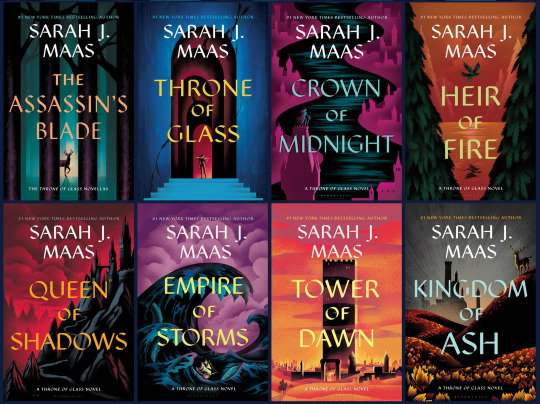
I recently finished reading the Throne of Glass series per a recommendation from a friend. I listened to the first 4 books and then read the remaining 4. Tower of Dawn was my favorite book from the series purely for Hasar’s line in how “she needed a fatter ass for her lover to grab at night.” I will not expand. My favorite character was probably Lysandra because she was so viciously competent and felt like the most well-rounded “human” character.
The story felt well paced with enough intrigue to keep me reading (even in the face of great irritation at the audio-book cadence*). It continuously delivered on action and visceral drama and climaxed with a satisfying conclusion to the epic 5000 page tale. The characters and world were robust and communicated effectively, albeit not entirely original.
This is probably my greatest criticism of the series. Throne of Glass digs its heels hard into almost every trope YA fantasy has to offer. A few of the author’s personal favorites became very apparent simply by their frequency (enemies-to-lovers in some form or another applied to well over 70% of the main romances in this series).
There was everything starting with the impossibly beautiful, dark, mysterious and deadly main characters, who: everyone falls in love with, is near-never outsmarted, and always has a lifetime of trauma before the age of 17 (including murdered parents and abuse by whipping [why is it always whipping?]). Relatively generic magic systems of bursting elements; main characters “discovering” their magic then becoming immediately competent and disproportionately powerful; larger-than-life dark lords; threats of worlds plunging into darkness; prophecies; a pantheon of (revealed to be false) gods; and a generic Christmas reskin, are just a few of the tropes ToG features. Most importantly however, we mustn’t leave out how almost every character of significance is beautiful beyond reason, hot, sexy, incredibly competent, and always outfitted with either the most alluring curves, or hardest muscle known to the genre. Oh, and why is that fantasy heroines are always sluts for chocolate? What is that?
The heavy presence and soon-forged expectation of these tropes allowed me to skim guiltlessly over large swaths of the story. I could tell I already knew the gist of most plot points without actually having to read them.
Now I don’t have anything truly against tropes however, or the use of them in storytelling. Nor do I think the absence of them guarantees a good narrative. However their overuse can make it difficult for a work to really “stand apart” from any others in the same genre. This is the case for ToG. It is a very engaging world but there is nothing truly original in it. I think a reader’s steadfast allegiance to this series will largely depend on if it was the first of its kind they read.
Besides suffering additionally from little YA genre stylings, such as the overuse of the word “shit,” (specifically in this case the phrase “all went to shit,”) and a variance of dramatic transitions loosely summarized as “all faded to black,” ToG delivers an excellent, cohesive, and engaging story worth the time of any reader looking for a YA fantasy book.
.
.
.
*Now let’s talk about the audiobooks. My opinions on the audiobook performance does not impact my overall sentiment to the content, as laid out above. BUT! To put it bluntly, I could not stand the audiobooks. The inflection, cadence, and overall delivery dripped with an arrogance and haughtiness (which, to be fair, were all very fitting for the main character) that ultimately oozed an unpleasant “pick-me”/”middle-school cringe” energy. (Look at me! I’m so dark and mysterious and cool. I’m an ASsAsInnnnNNNN *fweu* *fweu* [as I toss imaginary knives at my friends on the playground, promptly run up the steps 3 at a time and lift an entire chair over my head because, I’m so agile, and strong])
Okay, that’s all. Bye bye.
12 notes
·
View notes
Text


A friend got married this past March and her wedding was "loosely #atla inspired." I was v excited at the opportunity to put together a #watertribe inspired #outfit that was #nerdy but still appropriate for #formal events.
.
The outfit was planned out and explored using quick #photobash in #photoshop before I gathered all the pieces. I had the pants and shoes already, bought the vest and shirt, and made the tie, bracelet, and shoulder cape.
(@erinkennedydesigns actually made the cape because she's amazing).
.
The #shouldercape was both for the touch of "ooh la la" and also because I needed to make sure I had something to keep me warm (how wonderfully thematic).
.
I ended up getting to wear this same ensemble the following week for #cabbagecon (where I was disappointingly misidentified as Varrick several times 😤) If I can, I'm hoping to wear it to #sdcc in a couple weeks too!
#atla#weddingoutfit#nerdy#formal#shouldercapesarecool#watertribe#avatarthelastairbender#avatar#masc#this counts as cosplay sorta right?#legendofkorra#lok#korra#sokka#katara
9 notes
·
View notes
Text
tumblr culture be like...
"is that (lgbt) ship actually a thing or is tumblr just being tumblr?”
5 notes
·
View notes
Text
My thoughts on LEGENDS AND LATTES (because no one asked)

I give this book a 4/5
The catchphrase for this story is an accurate summation of what you get – it’s very high fantasy and very low stakes, slowing down the typical fate-of-the-world storylines of high fantasy novels and bringing it to a calming day-to-day-Stardew-valley vibe. It’s a light, fun, feel-good story with enough plot to keep you engaged.
I thoroughly enjoyed the book, but decided to give it a 4/5 for 2 main reasons.
1. A few areas of the narrative became very repetitive. This flaw was most noticeable with development of the café’s baked goods menu. After the initial cinnamon roll reveal, every subsequent dessert followed a similar pattern (and length) of description, reaction, and conclusion. It felt longwinded and unnecessary. In addition, the descriptions of the character’s reactions to the confections sometimes got borderline sexual…which was just a little odd.
2. The romance aspect was forced. I’m not going to say it wasn’t necessary, because whatever, you do you, but it doesn’t change the fact it felt “tacked on” after the main portion of the plot was fulfilled. I don’t think it really made its presence in the narrative until about 2/3’s the way through. For me, this undermined its believability.
Ok, thanks. Bye.
#legendsandlattes#dnd#dungeons and dragons#book review#i know nobody really cares what I think#but this was a document sitting in my recovered folder and I felt like I wanted to shove the text somewhere so lucky you tumblr#thought for your thoughts
0 notes
Photo

Sentimentality
“Phantom” - Of Monsters And Men
#art#drawing#sketch#doodle#sentimental#flamingtunapictures#blue pencil#schmood#omam#of monsters and men#phantom
0 notes
Photo

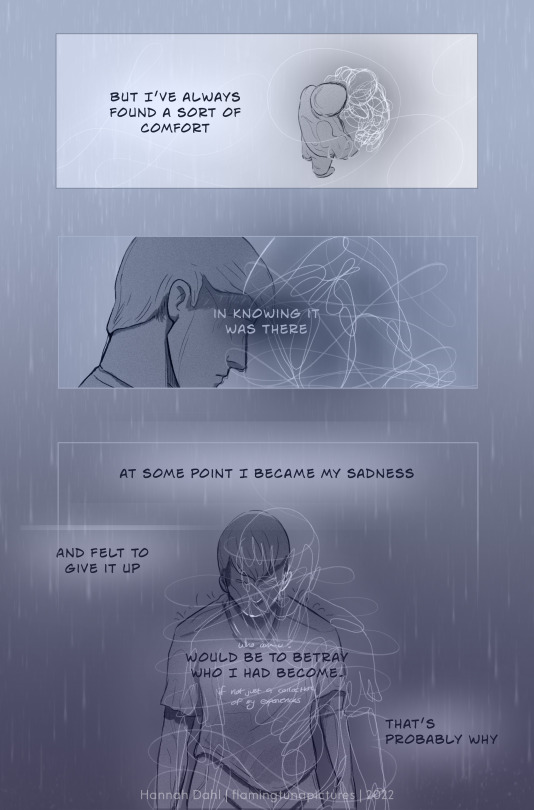

started this a few days ago, wasn’t feel’n it, but committed to finishing the bit
EDIT: 6 months later, I’m realizing this comic was a pivotal moment for processing the division of my self worth from my experiences.
#digitalart#comic#webtoon#sad#emo#youlittleemoshit#sentimental#flamingtunapictures#yupididathingyay#thebit#AURORA#theriver#songlyrics
0 notes
Photo
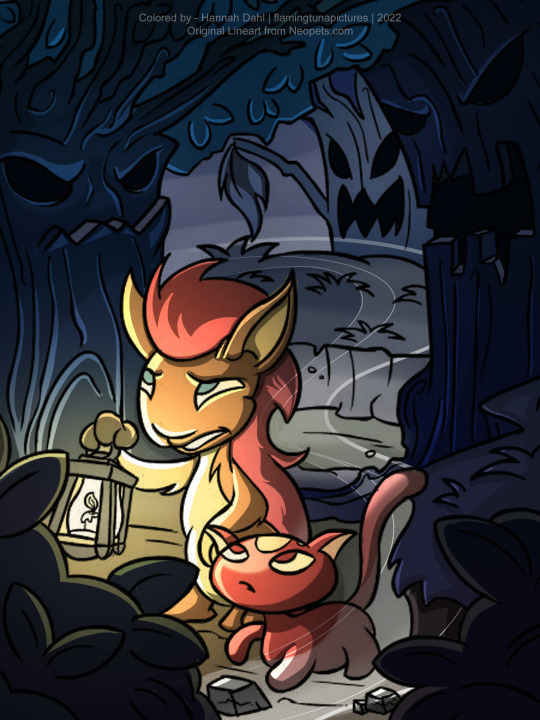

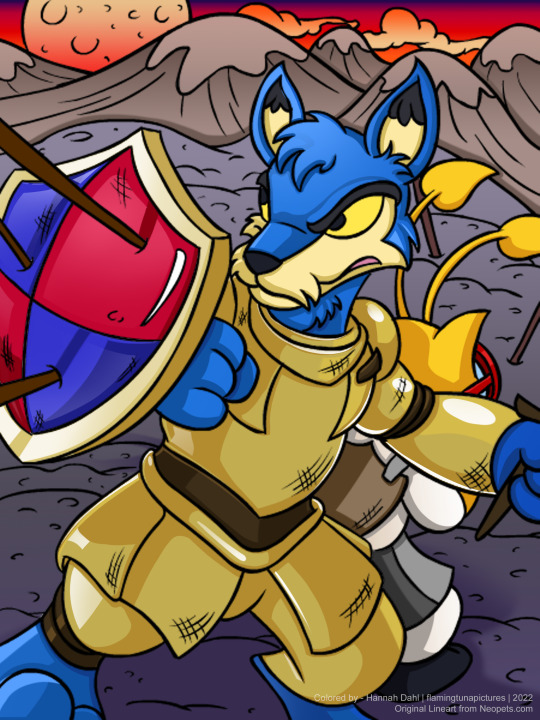
Collection of the Neopet coloring pages I CoLoUrD a few months ago. I have since aquired about 95% of all the Neopet cards. I’m just missing a handful of foils...
#neopets#neopet#color#coloring#coloringpage#jeran#moehog#lupe#aisha#lisha#kyrii#kyri#kadoatie#digital#digitalart#digital coloring#meridell#battleformeridell#Faerie Moehog#faerie paint brush#faerieland#hauntedwoods#flamingtunapictures
0 notes
Photo

0 notes